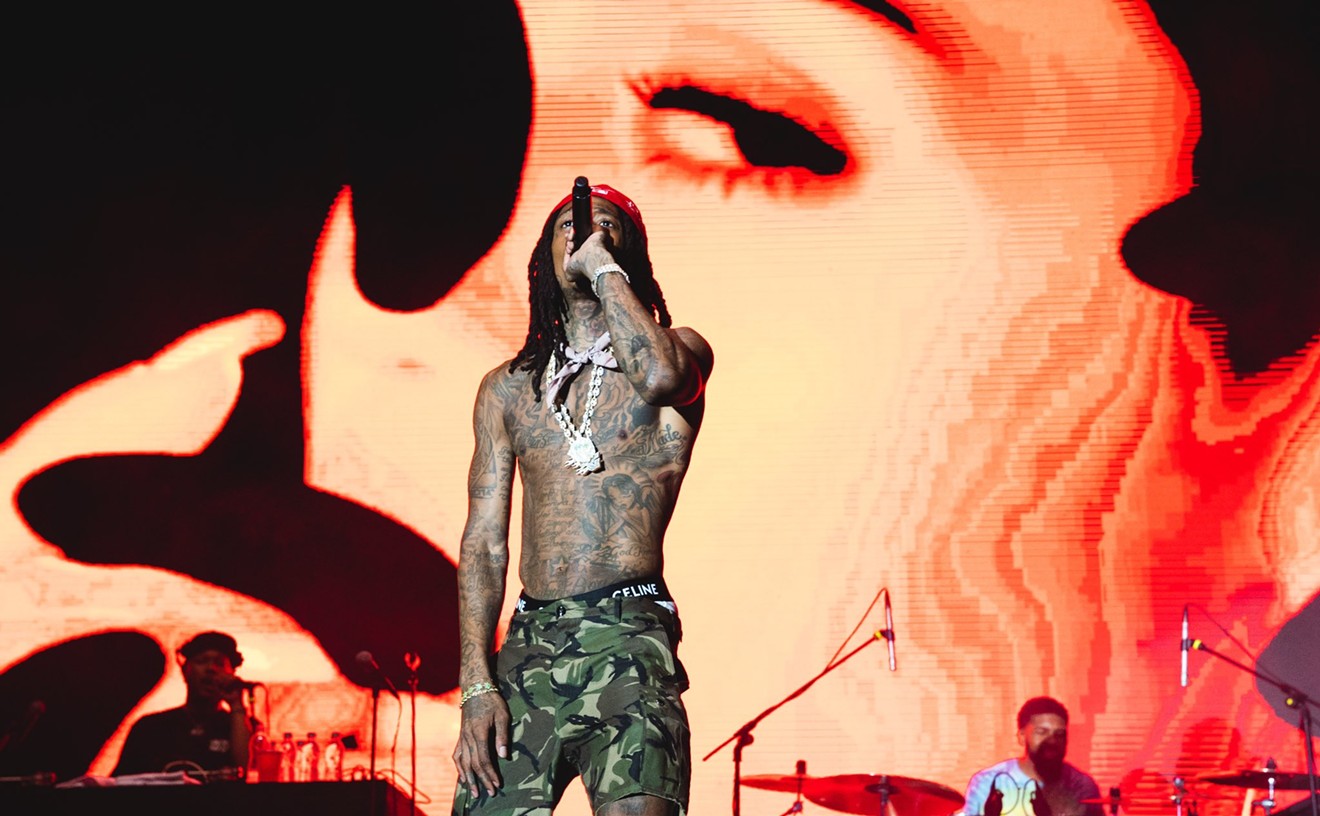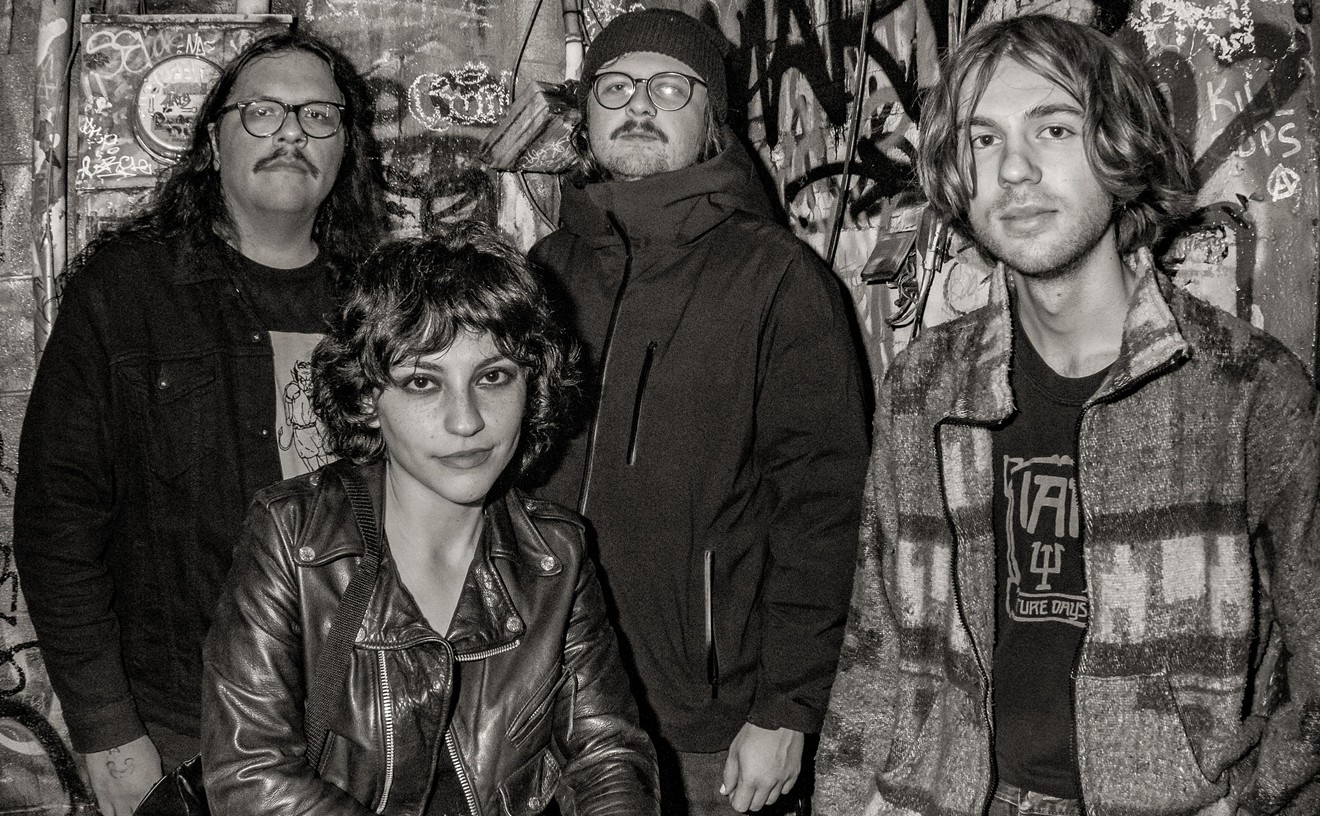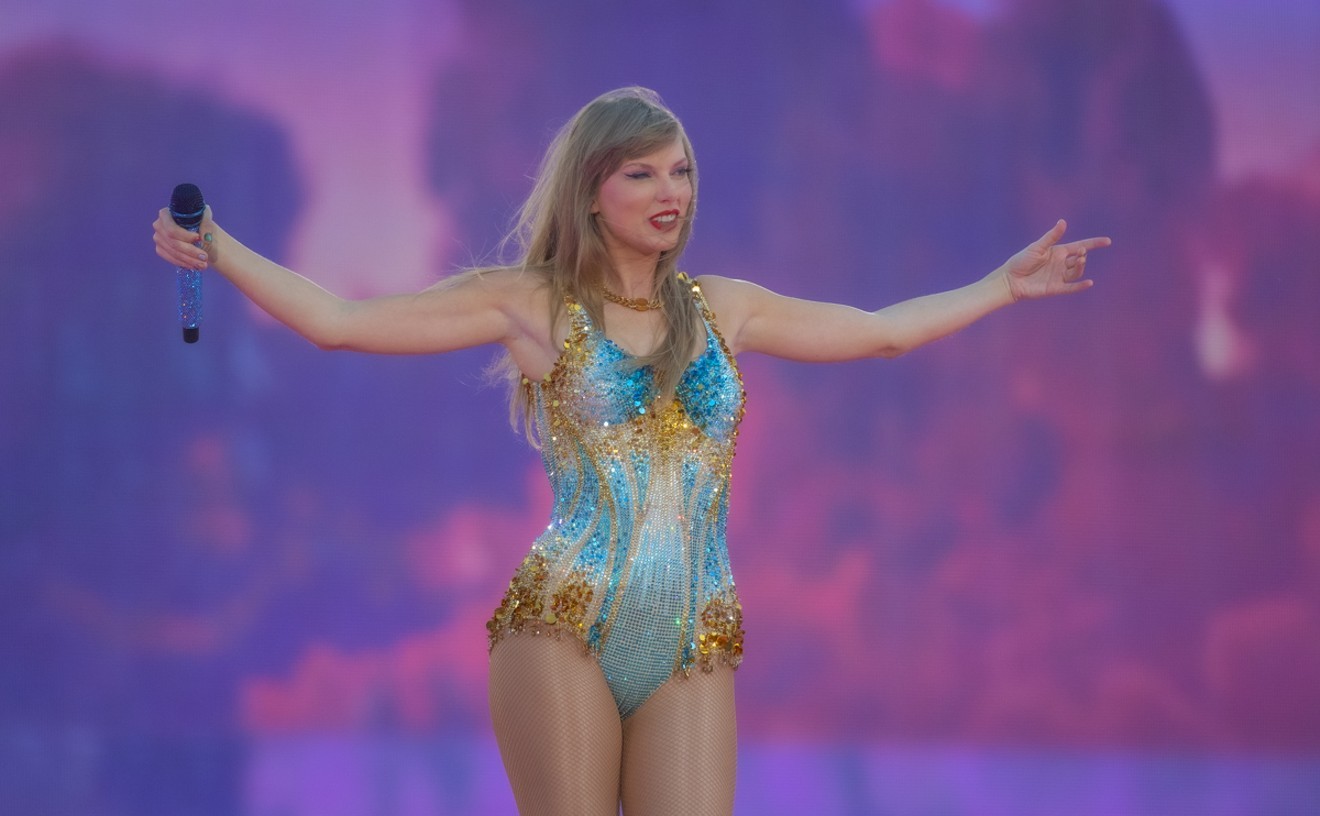In the October 9 issue, we ran excerpts of Tom Murphy's recent interview with Tim Gane from Stereolab. The following is the transcript from their entire conversation.
Westword (Tom Murphy): What ideas, musical and otherwise, did you explore on Chemical Chords that perhaps you did not on previous releases?
Tim Gane: The way I do it is I don’t want to say anything; I want to find out something. I was messing around with an approach to doing that on “Margerine Eclipse.” I decided to write two versions of the song. One on one speaker, the other on the other speaker – and get a third version when you play both speakers. On this record I tried the idea of recording just rhythms and then writing the chords. Then playing the two together to see how the rhythms would influence the chords or the chords influence the rhythms. I wanted to listen to the music as though someone else had written it, as though I wasn’t completely in control of it. I was responding to it like a listener, obviously I’m making the decision at the end like whether or not it sounds good. The point is to try to loosen up control over things because I realize I have a certain way of writing chords or whatever and I’m always trying to sort of upset that a little bit.
WW: The album cover looks like the star-filled silhouette of a human being with a head bursting with colorful ideas. Did you give any conceptual direction to the artist or was that something the artist did on her or his own?
TG: Not with this particular record, no, I was too busy. The guy that normally does the artwork, Julian House, I’ll go in there with some ideas, stuff I’ve cut out of a magazine or something like that, and then he looks at the stuff. Normally he changes everything like an artist or graphic designer would. Me, I’d just cut out pictures and stick it on the front. In the end I would explain I want this record to be a little bit orange, dark or something. On this particular record we told Julian to just start working on it and then send us some ideas. He sent me a bunch of different interpretations of it, mostly the montage style that it is. I chose two or three and we used one for the front cover and one for the back. I was happy with it.
WW: Did you work with a different artist this time?
TG: No, we worked with the same artist we started working with in 1997 for Dots and Loops. We’ve used the same guy. I really like him and I like working with people to whom I don’t have to explain anything, you know? One of the human reasons why you work with people – if you constantly change the person you work with all the time, you can’t relax and there are so many things you need to do before you actually start working. If it’s someone you know, you have the songs and you don’t have to explain what you’re trying to do and what you don’t like and what you do like. That’s why we work with certain photographers, certain directors etc. They can get off to a quick start.
WW: Does “One Finger Symphony” refer to how the song was played with synths and so forth? Does it also refer to the theme of the song?
TG: Actually that was a totally random title. When we were working on the tracks, they all started off being called something like “Drum Loop 42,” and they're really short and you can’t remember all these loops. You start to name the songs … I had a copy of the British Record Collector Guide to Collecting Records, it’s a big book, and I opened the book at random and picked the first word that I saw. There must have been something in there that said “one finger” or “finger” and thought maybe this could be like writing a one finger symphony. I like the reference to simplicity or something with one finger. And now we have another song, it’s called “Two Finger Symphony.” That could mean something completely different. A lot of the titles are just random words that I saw when I opened a book and saw a record label or the name of a single, the name of a group.
WW: I’ve always loved your T-shirts. For the Sound-Dust tour you had an array of beautiful designs -- I still wear them all regularly. What types of designs do you plan to offer for this tour?
TG: The design for the skull butterfly was an alternative possibility for the cover of Sound Dust, and I took it from my... I kind of have a lot of Polish and Czech influences like '60s films and, in the end, we used the one from Cul-de-Sac, the Polanski film and put it on the T-shirt. Normally, I’m just finding stuff. The new one we did a kind of gold with the normal guy from our early records, it’s good and quite simple. The other one has kind of a cut out from a picture from a Cinzano advert from the 1930s — they kind of envision the future. And on one of them is a funny picture of a little kid playing a strange-looking keyboard with these gizmos coming out of it. We stuck it on a T-shirt — that’s my style. Ultra simple and it looks great.
WW: “Pop Molecule” is the only song with no apparent lyrics and only the barest of a pop structure. Was the title kind of a joke or is there a deeper meaning behind it?
TG: Not really. Basically, what it is is one of two tracks I call “Excavations” – what it is, is I cut a loop from a record, and it’s so tiny it sounds like it’s blurring when you loop it. For instance a tiny sample of less than a second, half a second or something like that, and I loop it sixteen times and mix it down to a piece of audio, and then I find another loop and mix that down until I have eight different loops, and I put them in an order at kind of random. And then what we do is listen to what’s going on in the sample and try to excavate what we can hear. What you can hear, is difficult to hear, because it is so short and sort of blurring that you don’t know why you should play anything, so you don’t get any kind of even flow. You hear a little guitar, but I don’t actually write anything on it. We just kick out what we don’t think you can hear, but what you hear isn’t really exact, so it’s hard to tell what’s going on. There’s another song on Fab Four Suture, the first track on that uses the same method. I don’t know what you’d call it, but I’d liken it to the way some pop artists will look at something and paint it in a real painterly style, but it still mimicks the plasticness of the original, whether Lichtenstein or someone else. For me it’s the loops we recreate and the real instruments, as the band, that reproduce these tiny little sounds. I call it “Pop Molecule” because it’s a tiny little fragment, it’s a molecule, really, a tiny tiny thing.
WW: Are there any ideas, works of art, events and/or people that have inspired you recently? How so?
TG: Lichtenstein, particularly. I always liked the way he would reproduce something using painting in a really painterly style. I’m very interested in the kind of pop art style and new ideas in general. I’m interested in cultural resonances in terms of music, which is why I find the approach to this album mimics, in some senses, the arrangements of architecture of Motown Records of the early '60s, because it has far more potent songs because of complicated resonances, like a radiation that comes off all the time, that years and years later, to me, there are almost incredibly complex and very subtle things to attach a cultural asset to them; they’re popular. Art music, or what we call art music, has less resonance. Its culture is much narrower. I think, when I listen to these tracks from the early '60s, they are just so strange. They sound so full of movement to me. If that were kind of an influence, it’s not really art. I’m really interested in a lot of modern-ish stuff but nothing I can connect with the record at the moment.
WW: Is there anything you hope to accomplish as a band that you haven’t yet?
TG: That’s a hard one. You know, I’m really living in the present. My concerns are really in terms of the moment. As far as outside of music, it’s stuff involving people I know – my son, my wife. In terms of the music itself, I like to keep things spontaneous. It’s a similar question to: “Is there anyone you really want to work with?” I always think, “No, not really.” I mean, if something comes up in the moment, yeah, I’ll do it. But I’m not so secretly hankering for working with Dr. Dre or something like that. If something interesting comes up, I’ll do it. With things like ambition, I don’t have any, really. It must sound weird to say that but in music itself, I want to get the most from it and make something interesting for everybody and myself. But that’s really it. I'm not doing music to go from A to Z. It’s in the doing of it, it’s in the action of it. I tend to pick the way that interests me the most.










